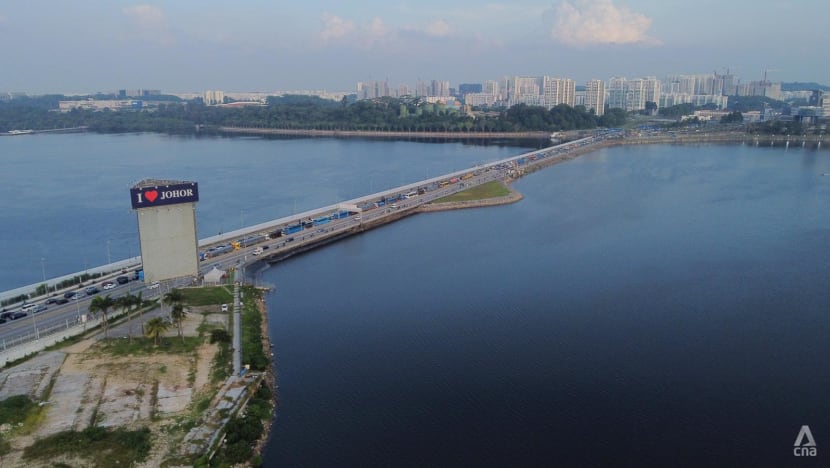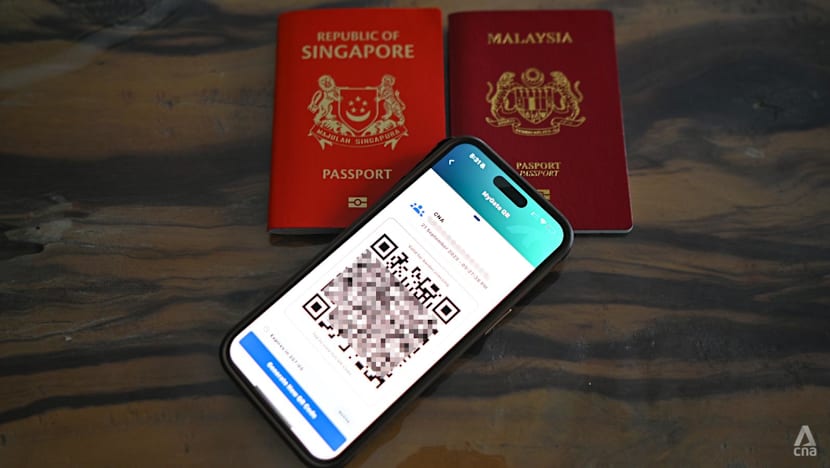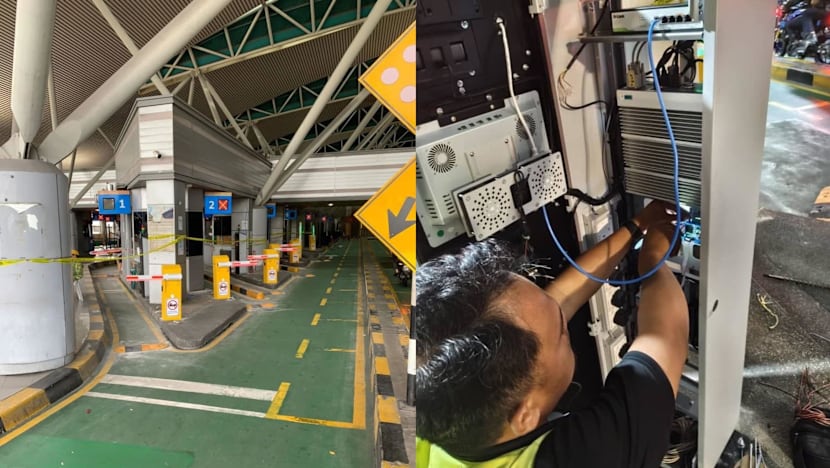Malaysia expands use of QR code clearance at Johor land checkpoints to motorcycle, pedestrian lanes
According to the Home Ministry, the move follows the “success of the first phase of the trial” under the National Integrated Immigration System (NIISe) that began on Sep 22, which initially involved car lanes.

An aerial view of the Causeway on Aug 6, 2025. (File photo: CNA/Zamzahuri Abas)
SINGAPORE: Malaysia on Wednesday (Oct 15) expanded the use of QR codes for Singaporean and other foreign travellers to clear the Johor land checkpoints at selected motorcycle and pedestrian lanes.
The move follows the “success of the first phase of the trial” under the National Integrated Immigration System (NIISe) that began on Sep 22, which initially involved car lanes at the two main southern entry points, according to a statement by Malaysia's Home Ministry on Tuesday.
The ministry was referring to the car immigration booths at the Bangunan Sultan Iskandar (BSI) customs, immigration and quarantine complex linked to the Woodlands Causeway as well as the Sultan Abu Bakar immigration complex linked to the Tuas Second Link.
“Motorcyclists and pedestrians are encouraged to download the MyNIISe application to generate a personal QR code to use at the special lanes provided during the trial period,” it said on Tuesday.
The pilot programme under NIISe - which is aimed at simplifying immigration clearance - will run until Feb 28, 2026.
“During the NIISe trial phase, the existing QR code system and MyBorderPass application can still be used. However, the public, including foreign visitors, are encouraged to switch to the MyNIISe application for immigration entry matters at the entry points that have activated its use,” said the Home Ministry.
CNA was previously made to understand that the MyNIISe app is likely to replace MyBorderPass after the trial phase for the former ends in March.

The ministry reminded the public that valid travel documents or passports are still required for the immigration entry process in accordance with the provisions of the Immigration Act.
Local news outlet The Star reported on Wednesday that more than 80,000 people have registered for the MyNIISe app to-date, though it did not give a breakdown on whether these were Malaysians or foreigners.
The app can be downloaded on the Apple App Store, Google Play Store and Huawei AppGallery.
“(The NIISe system) aims to speed up immigration inspection process, reduce congestion and strengthen national border security through the use of more efficient and user-friendly digital technology,” the Home Ministry said on Tuesday.
The expansion of the MyNIISe app for motorcyclists was earlier announced by Johor Public Works, Transport and Infrastructure Committee chairman Mohamad Fazli Mohamad Salleh last week.
“A total of seven exit lanes at BSI - (lanes) B1-B7 - are specifically provided for motorcycle users using the MyNIISe application,” he said in a Facebook post on Friday.

At the Sultan Abu Bakar immigration complex linked to the Tuas Second Link, there are eight motorcycle lanes, with four of the lanes (B21-24) equipped with a MyNIISe QR code scanning system, he added.
Besides the two land checkpoints, the trial will also be rolled out concurrently in phases at main airports around the country - Kuala Lumpur International Airport Terminals 1 and 2, Penang, Kota Kinabalu and Kuching.
CNA reported earlier that the trial phase for car travellers which began on Sep 22 got off to a mixed start on the first day.
Some issues arose with using the app when first exiting Johor, with CNA being informed by immigration officers manning the booth that the system was not yet in operation.
The move to facilitate QR code clearance was eagerly anticipated as passport-less travel at the land borders has been on the cards since January 2024.
Both the Singapore and Malaysia governments had said they were exploring passport-less clearance as part of initiatives to smooth immigration clearance in view of the planned Johor-Singapore Special Economic Zone.
While Singapore rolled out QR code immigration clearance at its land checkpoints with Johor on Mar 19 last year, this marks the first time Malaysia is offering the opportunity to foreigners.














